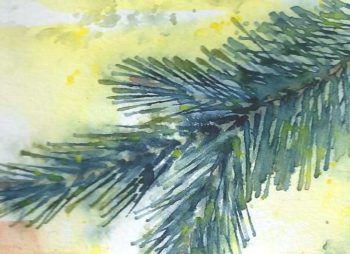
Taxonomic descriptions have gotten a bad rap: “dry”, “desiccated”, “mere description”, “stamp collecting”. But a taste for the precise and spare poetry of these nuggets of natural history is worth acquiring.
In the past several decades, the Flora of North America Project has been compiling what is hoped to be the standard taxonomic accounts of, well, all flora of North America. Every now and again, especially when the paragraph I am writing becomes increasingly complex and tangled, I like to pull one of the volumes off my shelf and read a clean and austere report of a species.
And what do I find? Descriptions of organisms as exact as a razor. Clarity. Poetic and mellifluous words with precise meaning: hirsute, glabrous, serrated. Flexuous. Say them out loud. Doesn’t your tongue feel good? Taxonomic descriptions don’t argue, don’t try to persuade, don’t editorialize. They point to a small piece of Nature and say: “Look. Consider this.”
Picea glauca (Moench) Voss; White spruce, western white spruce, Porsild spruce, Black Hills spruce, epinette blanche.
Trees to 30 meters; trunk to 1 meter diameter;
crown broadly conic to spirelike;
Bark gray brown.
Branches slightly drooping; twigs not pendant,
rather slender, pinkish,
brown, glabrous.
Leaves (0.8 to) 1.5 to 2 (to 2.5) centimeters,
4-angled in cross-section,
rigid, blue-green,
bearing stomates on all surfaces, apex sharp-pointed.
Seed cones 2.6 to 6 (to 8)
centimeters;
scales fan-shaped, broadest near rounded apex, 10 to 16
by 9 to 13 millimeters,
flexuous,
margin at apex more or less entire, apex
extending 0.5 to 3 millimeters
beyond seed-wing impression. 2n equals 24.
Muskegs, bogs, and river banks to
montane slopes.
Taxonomic description from:
Flora of North America, Volume 2
Pteridophytes and Gymnosperms
1993